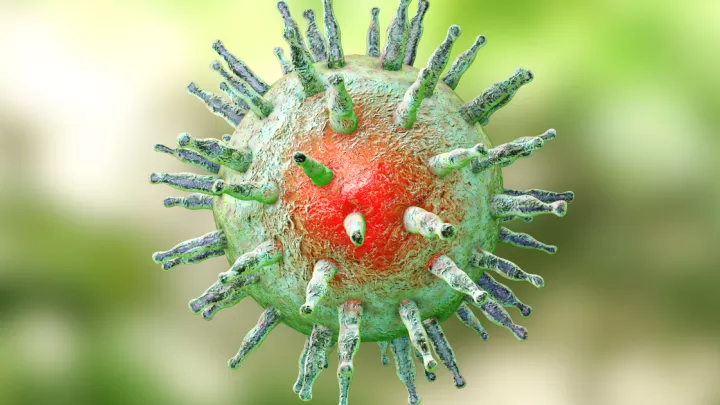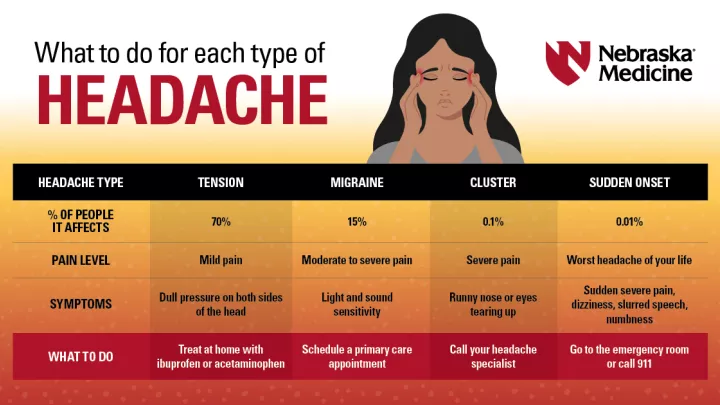Can concussions be permanent?

Hitting your head isn’t a good thing. The brain is good at healing itself, but take steps to protect yourself.
A concussion is a type of traumatic brain injury caused by a bump, blow, or jolt to the head or body. Brain injuries are categorized on a severity spectrum from mild to moderate to severe. While concussions typically fall into the mild range and are not life-threatening, they should be taken seriously for good reasons.
Why take concussions seriously?
Ongoing research is looking at the long-term effects of concussions. While MRI or CT imaging scans almost always look OK after a concussion and help rule out a moderate to severe brain injury, they don’t show us the whole picture. Since the brain is our body’s control center, the effects of a concussion – or several in succession – may increase the risk of future problems.
According to Nebraska Medicine neuropsychologist Kate Higgins, PsyD, here is what we know:
- Healing is unpredictable. Because people recover differently and at different paces, we can’t predict how one person’s body will react in comparison to another, which is why cookie-cutter concussion treatment doesn’t work
- If a person experiences a concussion followed by another shortly after, we see more severe symptoms that last longer
- The sooner concussion is treated, the faster the recovery. Research has also shown that receiving care from a health care provider who is well-versed in concussions also improves recovery outcomes
What happens in the brain when a concussion occurs?
The brain is an electrical-chemical system. When you experience a concussion, those chemical levels become dysregulated. The electricity doesn’t work as effectively, so the messages either don’t travel as fast or get interpreted as efficiently. The brain also can’t utilize glucose- which is its energy source- as effectively.
“The brain changes we see for a concussion are different than what we see for a moderate to severe brain injury,” says Dr. Higgins. “On the moderate to severe side, we see changes to the brain itself, including structural changes, brain bleeding or swelling. For concussions, the change is functional rather than structural. It’s more about the brain’s ability to communicate and integrate information effectively.”
There are multiple components of concussions, including:
- Some level of brain trauma
- Physical symptoms
- Behavior or emotional changes
- Social or environmental changes
Can concussions be permanent?
Generally, the brain is quite good at healing itself, but it is also a complex organ, and there are pieces of the puzzle we don’t yet know. Because everyone responds to concussions differently, one person may bounce right back while the next person may not.
“Unlike a more severe brain injury, with a concussion, we see pretty clean imaging, a minimal loss of consciousness, minimal post-traumatic amnesia, and generally, we expect a complete recovery,” says Dr. Higgins. “Everyone heals differently, and for some people, the brain struggles to recover the more concussions a person experiences.”
With repeated concussions, there are signs that indicate the brain is struggling to recover after a concussion. Generally, a person should stop participating in activities with a high risk of concussion if:
- They get a concussion from less force
- It takes longer to recover than expected
- They experience more severe symptoms after a concussion
What to look for when seeking concussion treatment
Find a doctor who has a clear track record of dealing with concussions. That could mean a sports medicine doctor or neuropsychologist with the specialized training to understand the nuances of concussions. Ask around to see whom others may recommend.
Things to look for:
- Do they see this kind of injury often?
- How do they treat concussions? Is there a comprehensive treatment plan that looks at all the factors causing the symptoms?
- Do they narrow down what symptoms need to be treated, such as sleep disturbance, anxiety, depression or other behavioral challenges?
- What are their clinical outcomes? Are patients recovering and getting back to their life or sport?
What about post-concussion syndrome?
“My concern with a post-concussion syndrome diagnosis is that it doesn’t tell us much,” says Dr. Higgins. “Post-concussion symptoms can overlap with many other problems like sleep deprivation, anxiety, depression, stress and more. We need to figure out what symptoms a person is experiencing and treat those so a person can fully recover.”
How to know if your concussion is getting better
Because there is no one-size-fits-all healing trajectory, see a doctor if you’re not beginning to feel better, feel about the same or are getting worse after a week.
Some guidelines:
- Parents of kids and teens: Watch your child’s behavior. How they act will tell you if their symptoms are improving and recovering
- Adults: Expect heightened symptoms for about 24 to 48 hours, but then expect things to start to improve. If it feels like symptoms are not diminishing, see a doctor
You may need specialty care if:
- You have a mood disorder or anxiety before concussion or an increase in depression or anxiety symptoms after concussion
- Sleep problems existed before or sleep problems appear after a concussion
- You experience ongoing dizziness, balance issues or nausea after a concussion
- There’s a history of attention deficit hyperactivity disorder or learning disabilities, you may need a specialist to help manage your return to school or work and provide clearance to return to sport
- You have a history (or family history) of headaches or migraine before a concussion
Concussion recovery stages
Return-to-sports recovery stages are helpful for athletes but also generally for adults as well. This method is used for getting athletes back to their sport, but adults can shift anything school related to returning to work.
These stages should show a gradual increase over a period of days to weeks. While the brain and the body need a few days to completely rest, there should be an intentional process of gradually returning to regular activity/work/school.
Research shows that a gradual return to physical activity decreases recovery time and helps the brain heal. Generally, recovery can take anywhere from two to four weeks, depending on your circumstances.
Stage 1: Symptom-limited daily living activities - this means sleeping and eating, and that’s about it
You may feel terrible for a day or two after an injury. This stage should be short, as in two to three days rather than weeks.
Stage 2: Light aerobic exercise without resistance training
You are out of bed, moving around, and can sit in class or work. At this stage, limit activities that require extended focus (no major papers or projects).
Stage 3: Sport-specific exercise and activity without head impact exposure
You can tolerate light cardio exercise and handle more physical activity and cognitive activities in school or work.
Stage 4: Noncontact practice with progressive resistance training
You can tolerate day-to-day activities without worsening symptoms and perform more dynamic movements.
Stage 5: Unrestricted training
With a plan in place, you can participate in sports practice and school and perform reasonable physical work.
Stage 6: Unrestricted return-to-sport
You are fully back to school, work, sports and daily activities.







